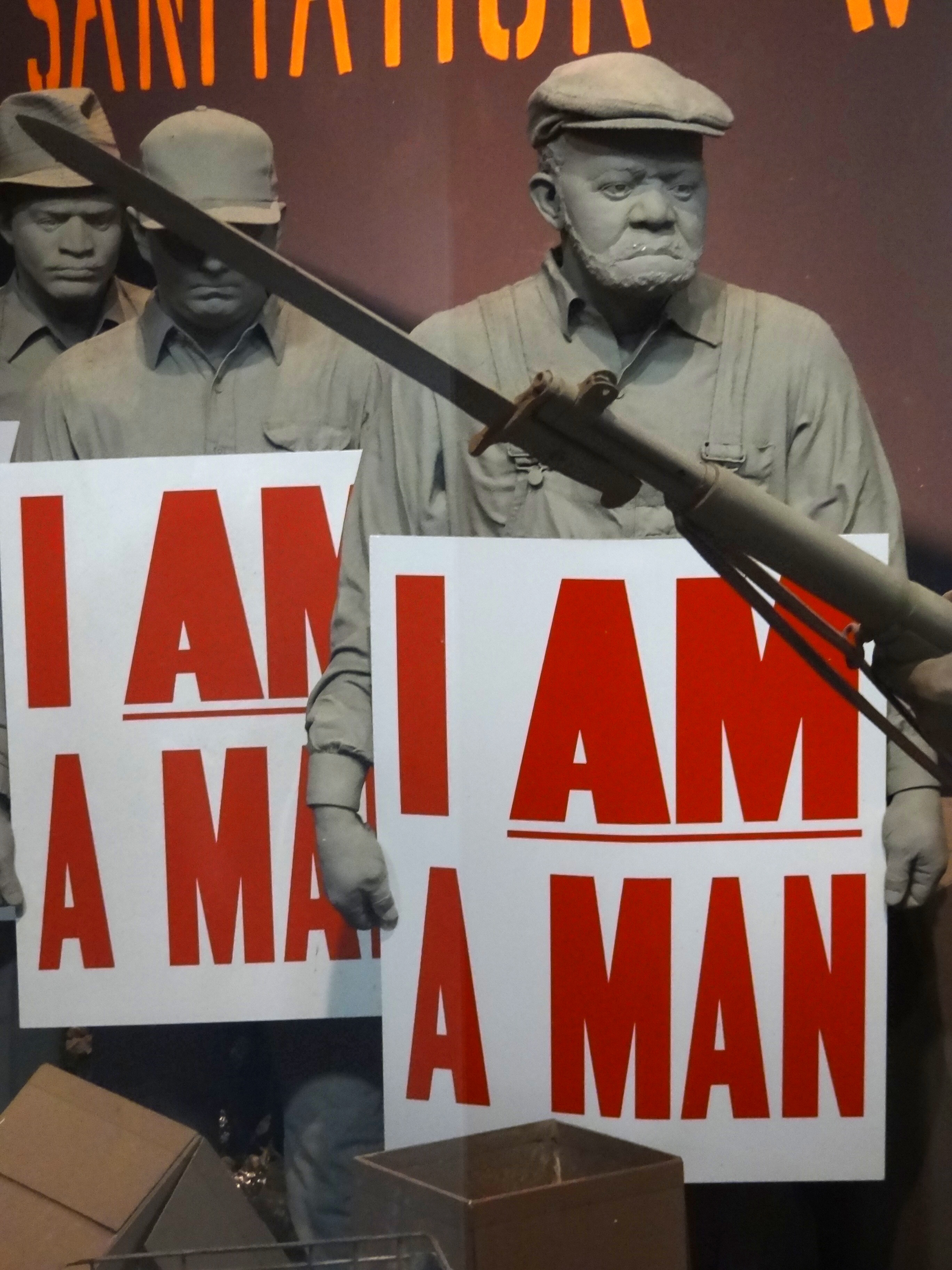Campaigners for
racial justice and worker rights have often stood shoulder to shoulder.
 Rick Smith hosts a daily radio talk show based in Carlisle,
Pennsylvania, which bills itself as the place “where working people come to
talk.” Smith makes it his business to know the pulse of the labor movement.
Rick Smith hosts a daily radio talk show based in Carlisle,
Pennsylvania, which bills itself as the place “where working people come to
talk.” Smith makes it his business to know the pulse of the labor movement.
But he admits to one area where his knowledge was uncomfortably
thin: the ties between the labor and civil rights movements.
“My knowledge of the civil rights era was extremely limited,” he
said in a recent interview.
“Basically Lincoln freed the slaves, Rosa Parks was
tired, and Martin Luther King made it all better.”
With both income inequality and racial inequities taking center
stage in the political debate this year, Smith decided to use this summer to
take his show on the road to learn about the historic intersections of the
civil rights and worker rights struggles.
His “People’s Tour” took him through key battlegrounds in the
South where civil rights and labor leaders stood shoulder to shoulder — through
North and South Carolina, Georgia, Mississippi, Alabama, and Louisiana.
 In time for Labor Day, he posted the interviews online at TheRickSmithShow.com.
In time for Labor Day, he posted the interviews online at TheRickSmithShow.com. Together they offer a rich audio library of victories won and yet to be won.
“We learned about James Orange, Fred Shuttlesworth, James Bevel,
Ralph Abernathy, and many other” key black leaders from the 1960s, Smith said.
“But also the support of Walter Reuther and James R. Hoffa,” white union leaders
who played a key role in linking their movements to civil rights.
One leg of Smith’s tour took him to the Rosa Parks Museum at Troy
University in Montgomery, Alabama.
“The story of Rosa Parks is a perfect example of the labor and
civil rights movements working together,” Smith explains, recalling Parks’
training in worker organizing at the Highlander Folk School in Tennessee. “The
training she received led to her being the face of desegregating the bus system
in Montgomery.”
Smith says a high point of the tour was his time talking with the workers from the 1969 Medical College Hospital strike in Charleston, South Carolina. That strike began when a group of African-American nurses staged a sit-in at the office of the hospital’s president and were subsequently fired.
King’s widow, Coretta Scott King, participated in the strike,
drawing national attention. The action furthered the work King himself was
doing with Memphis sanitation laborers and the American Federation of State,
County, and Municipal Employees when he was assassinated in 1968.
The history of the labor movement is also filled with numerous
points of tension with the movement for racial justice, ranging from the
battles against racial discrimination in the steel industry after World War II
to today’s face-offs between police unions and Black Lives Matter activists
over shootings of unarmed black people.
Smith, who says he grew up in the projects in Cleveland, doesn’t
dismiss those tensions. But he’s hoping workers across racial lines will focus
on the stories of successful collaborations that led to societal change.
“In every city we visited, and with every story we heard, the
call for equality, justice, fairness, dignity, and respect did not have a white
face or a black face or a brown face,” he said. “It was the face of working
people trying to live the American promise of life, liberty, and the pursuit of
happiness.”
Isaiah J. Poole
is the online communications director at Campaign for
America’s Future. Distributed by OtherWords.org.